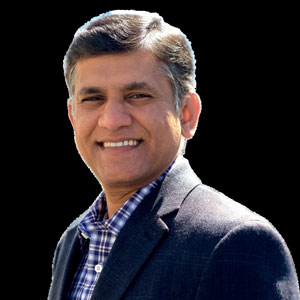THANK YOU FOR SUBSCRIBING

Creating Efficiencies with SAP and Mobility
Lee R.Johnson, SVPand CIO, GulfMark and Neeraj Sahu, and VP,GyanSys Inc


Lee R.Johnson, SVPand CIO, GulfMark and Neeraj Sahu,
Before GulfMark implemented SAP’s ERP suite in 2008 there were multiple systems (15+) across regions with the majority of the processes performed manually and with spreadsheets. These disparate systems and processes were constraining the growth of the company. The business metric for the financial close process was 15 days, limiting the management‘s visibility to timely financial information for decision making. HR was having difficulty in processing payrolls on time with a level of accuracy. Enterprise scalability for growth, disaster recovery and SOX compliance were considered high risks.
Several of the business drivers for implementing a global ERP system were to simplify the landscape of systems and processes for HR, Finance, Budgeting, Forecasting, Sales and Purchasing with the goal of securing global efficiencies. Fast forward to today, and GulfMark has been transformed into an offshore industry landscape for enabling global efficiencies. Critical infrastructure (SAP and Microsoft) are cloud based enabling high availability disaster recovery, enterprise scalability and SOX compliance. A single SAP ERP supports the global functions of HR, Payroll, Crewing, Finance, Consolidations, Sales, Treasury, Forecasting, Budgeting, Purchasing and Maintenance integration.
In summary, GulfMark has been able to leverage the power of SAP’s ERP suite and mobile user experience to streamline the business and connect critical processes globally across regions for efficiencies.
Several guiding principles have contributed to
Focus IT Resources on Business Impacting Projects
Systems infrastructure was moved to the cloud to free limited IT resources and focus on business impacting projects. The 80/20 maintenance to development ratio was reverse to 90 percent development and 10 percent maintenance. The previous break fix culture was re-engineered and automated to allow attention to critical business priorities.
Deliver Project Benefits < 3 Months
Project activities are organized for quick wins with implementations under three months. This is achieved through an agile development methodology involving prototyping and high user engagement. High complexity projects are blueprinted and scoped for business impact applying release management. Objectives of simplified processes and master data management are enforced. Pilots created to prove solutions are working as designed and adopted by the users before a global ramp. And more importantly, an executive business owner is a prerequisite for every project.
Develop Mobility Apps to Drive User Adoption and Process Excellence
A critical success factor for a successful Global ERP solution is user acceptance and adoption. GulfMark became an early adopter of mobility solutions to address this challenge. This led to the creation of the ‘GulfMarkAppStore’ and the support of global smartphones and iPads for onshore and offshore employees.
A mobility architecture was created leveraging SAP’s Netweaver Gateway, web services and HTML5 solutions. The mobility platform provides 24/7 anytime access onshore and offshore with any device (desktop, tablet, smart phones and across all operating systems). The mobility apps are designed for simplicity eliminating business complexity through defined business rules and logical unit of work designs.
Over the last two years GulfMark has introduced over 70 internally developed and commercial apps to the business. The mobility apps encompass all spectrums of the business including HR, Onboarding, Payroll, Crewing, Finance, Treasury, Procurement, Inventory, Maintenance, Accounts Payable, Sales, New Builds and Safety. Due to the nature of the offshore industry, mobility solutions are well received by onshore and offshore employees and the usage of the mobility apps has increased significantly thus re-enforcing the value of repeatable processes to achieve global efficiencies.
GulfMark is now introducing mobility apps to its customers providing them secured access to relevant vessel and operations information.
GulfMark has leveraged its global ERP, cloud technology and mobility solutions to create a market advantage resulting in efficiencies, scalability and global process excellence. In this competitive energy market, these improvements and the next wave of efficiencies will continue to differentiate GulfMark from its competitors.












